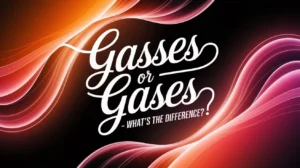Last Updated on April 12, 2025 by Johnny Peter
Understanding the difference between “pre” and “post” prefixes can help you communicate more clearly and accurately. Whether you’re a student, writer, or content creator, knowing when to use “pre” (before) and “post” (after) is essential for proper language use.
Many times, these two prefixes are misunderstood, leading to mistakes that can weaken your writing. In this article, we’ll dive deep into the meanings, examples, and practical uses of these prefixes, helping you confidently make the right choice.
But that’s not all! We’ll also explore their use across various fields such as medicine, education, technology, and history, giving you a broad understanding of their application. So, whether you’re writing an essay, working on a report, or simply want to expand your knowledge of English prefixes, this guide will help you avoid common mistakes.
By the end, you’ll be a pro at using “pre” and “post” in the right context, boosting the clarity and professionalism of your communication. Let’s get started!
What Are Prefixes? A Quick Refresher
Before we dive into the specifics of “pre” and “post”, let’s take a moment to define what a prefix is. In simple terms, a prefix is a group of letters added to the beginning of a word to change its meaning.
For example, when we add “un-” to “happy”, we get “unhappy”, meaning not happy. Prefixes help us modify the root word to create new meanings or nuances.
Here’s a quick list of common prefixes and their meanings:
- Pre-: Before
- Post-: After
- Un-: Not
- Re-: Again
- Dis-: Not, opposite of
In English, “pre” and “post” are particularly useful when discussing time-related concepts. Understanding when to use each can help you express ideas more clearly and precisely. Let’s explore these two prefixes in greater detail.
Understanding “Pre-”: Meaning and Usage
The prefix “pre-” comes from the Latin word “prae”, meaning before. It’s used to describe something that happens before a particular event or point in time. The use of “pre-” is common in words related to planning, events, and actions that occur ahead of a specific point.
Common Words with “Pre-”
- Preview: A look at something before it is fully shown
- Preschool: An educational setting for young children before primary school
- Pretest: A test taken before a full exam to assess knowledge or readiness
- Prehistoric: Referring to the time before written history
- Prepay: To pay for something before receiving the service or product
Examples in Sentences:
- Prehistoric animals roamed the earth millions of years ago.
- She scheduled a pretest to measure the students’ knowledge before the final exam.
- We need to prepay for the tickets to ensure our spots.
When to Use “Pre-”
Use “pre-” when referring to something that happens before a certain event, time, or process. It’s perfect for situations where you’re planning or organizing actions ahead of time. For example, before a wedding, there might be pre-wedding preparations like a rehearsal or fitting.
Understanding “Post-”: Meaning and Usage
The prefix “post-”, on the other hand, comes from the Latin word “post”, meaning after. It’s used to describe something that happens after a particular event or point in time. Similar to “pre-”, “post-” is widely used in various fields, including medicine, history, sports, and technology.
Common Words with “Post-”
- Postpone: To delay something to a later time
- Postmortem: An examination of something after an event, typically used in reference to a medical autopsy
- Postwar: Referring to the period after a war
- Postscript: A message added after the main body of a letter or document
- Postnatal: Referring to the period after birth
Examples in Sentences:
- The postmortem revealed important information about the cause of death.
- Postwar economic recovery took many years to achieve.
- She added a postscript to her letter, saying she’d be in touch soon.
When to Use “Post-”
Use “post-” when referring to something that occurs after a certain event, time, or process. For example, in the healthcare industry, you might refer to postnatal care for a mother and baby after childbirth.
Side-by-Side Comparison: Pre vs Post
Let’s break down the differences between “pre-” and “post-” in an easy-to-read table format. This will give you a quick visual comparison to help you remember when to use each prefix:
| Prefix | Meaning | Example | Opposite Example |
| Pre- | Before | Prehistoric | Posthistoric |
| Post- | After | Postgame | Pregame |
| Pre- | Before | Prepay | Postpay |
| Post- | After | Postmortem | Premortem |
| Pre- | Before | Prelaunch | Postlaunch |
As you can see, “pre-” refers to things that happen before a specific event, while “post-” refers to things that happen after that event. The two prefixes can often be used to describe similar actions but in different timeframes.
Visual Guide: Pre vs Post in Real-World Scenarios
Here’s a visual guide to show you how pre- and post- work in the real world. Imagine a timeline with a specific event in the center. Words with pre- occur before the event, while those with post- occur after the event.
Pre vs Post Example Timeline:
- Pre-COVID: The world before the COVID-19 pandemic.
- Post-COVID: The world after the pandemic, reflecting changes in society and behavior.
- Pre-launch: The time before a product is officially released to the public.
- Post-launch: The time after the launch, during which the product is available and feedback is collected.
This timeline concept can be applied to almost any event, helping you understand when to use each prefix based on the timing of the event.
Common Mistakes and Confusions
Despite their clear meanings, “pre-” and “post-” are often confused. Here are a few common mistakes:
- Using “postpone” when “prepone” is meant: Some cultures, like Indian English, use the term “prepone” to mean “to bring something earlier,” which is technically not correct in standard English.
- Misunderstanding the opposite meaning: Words like “postmodern” and “preemptive” don’t directly oppose each other. For example, “postmodern” doesn’t mean the opposite of “pre-modern”; it refers to an art or cultural movement that follows modernism.
- Confusing time-related terms: In certain contexts, people might confuse “prewar” with “postwar” because they don’t understand the exact timeline or historical context.
To avoid these errors, it’s essential to think in terms of time: before vs. after.
Pre vs Post in Different Fields
Both “pre-” and “post-” are widely used across various industries. Let’s explore how they’re applied in different fields:
Healthcare
- Pre-natal: Care before birth (e.g., pre-natal vitamins)
- Post-natal: Care after birth (e.g., post-natal checkups)
Education
- Pre-test: A test given before the main exam (to assess readiness)
- Post-test: A test given after the main exam (to evaluate learning progress)
Technology
- Pre-installation: Software installation done before the system is fully set up.
- Post-installation: Actions taken after installation, such as system updates or troubleshooting.
History
- Pre-war: The time before a war, often used in historical contexts (e.g., pre-World War II).
- Post-war: The time after a war, usually referring to changes in society, economy, or politics (e.g., post-war reconstruction).
Sports
- Pre-game: Activities or preparations before a sports event (e.g., pre-game warmups).
- Post-game: Events or activities after a sports event (e.g., post-game analysis).
Final Tips for Choosing Between “Pre” and “Post”
When deciding whether to use “pre-” or “post-”, remember the following:
- Think about time: Is the event happening before or after?
- Check your context: If you’re describing something before an event, use “pre”. If you’re describing something after an event, use “post”.
- Clarity is key: If in doubt, consult a dictionary or thesaurus to ensure you’re using the correct word in context.
Conclusion: Make Your Prefix Choice Clear and Confident
Understanding the difference between “pre-” and “post-” prefixes will help you communicate more effectively and avoid common language mistakes. Whether you’re writing, speaking, or simply learning, knowing when to use “pre” and “post” will allow you to express time-based ideas clearly.
So, the next time you encounter “pre-” or “post-”, remember their meanings: before and after, respectively. With these simple tips, you’ll be able to choose the right prefix every time, enhancing your writing and communication skills.
FAQs: Pre vs Post
1. What is the difference between “pre-” and “post-”?
“Pre-” means before, while “post-” means after. These prefixes are used to show the time or sequence of an event. For example, “pre-launch” means before a product is launched, and “post-launch” means after it’s launched.
2. Are “pre-” and “post-” interchangeable?
No, they are not interchangeable. Using the wrong prefix can change the meaning completely. For instance, a “pre-test” is taken before a course, while a “post-test” is taken after. Switching them would confuse your message.
3. Is “prepone” a real word like “postpone”?
Technically, “prepone” is not standard English, though it’s commonly used in Indian English. In most contexts, you’d say “move the meeting earlier” instead of “prepone.”
4. Can I use both prefixes in one sentence?
Yes! Just make sure your meaning is clear. For example:
“We conducted both a pre-event survey and a post-event analysis.”
Here, both prefixes help show the timeline.
5. What are some professional uses of “pre-” and “post-”?
- Medicine: Preoperative care vs. Postoperative recovery
- Education: Pre-test vs. Post-test
- Business: Pre-launch strategy vs. Post-launch feedback

Steve Morgan is the mastermind behind Punny Universe, where puns, jokes, and clever wordplay come together to create endless laughter. With a knack for turning everyday moments into comedic gold, Steve has made it his mission to brighten your day, one pun at a time.












